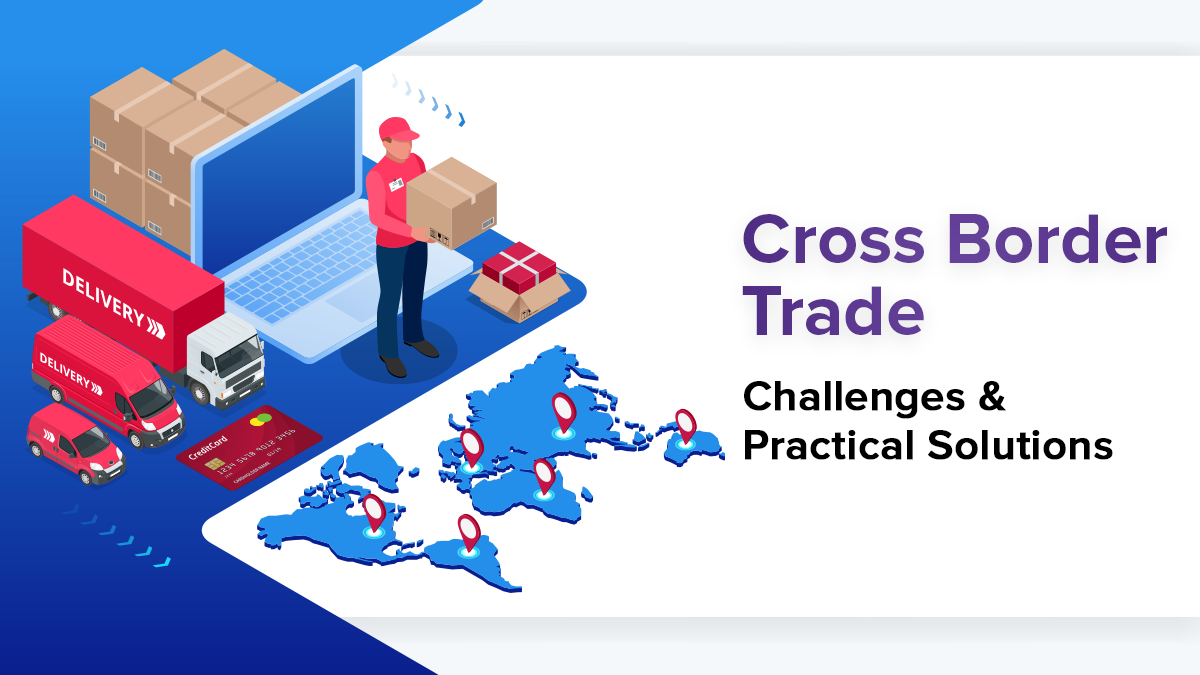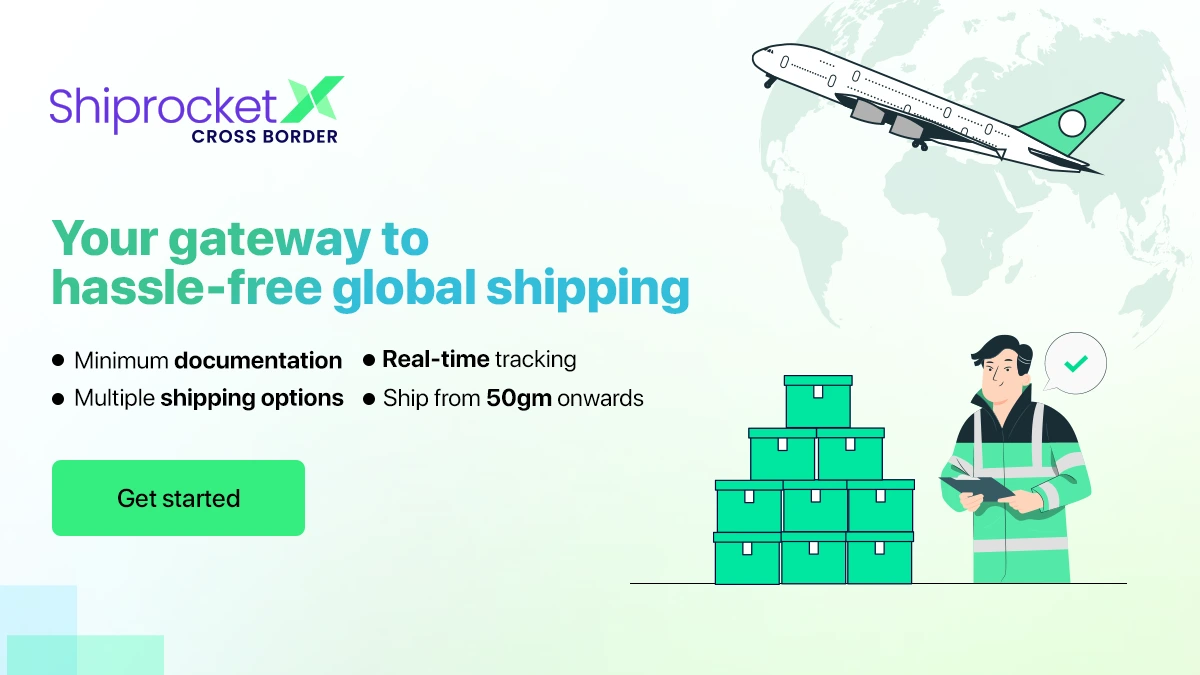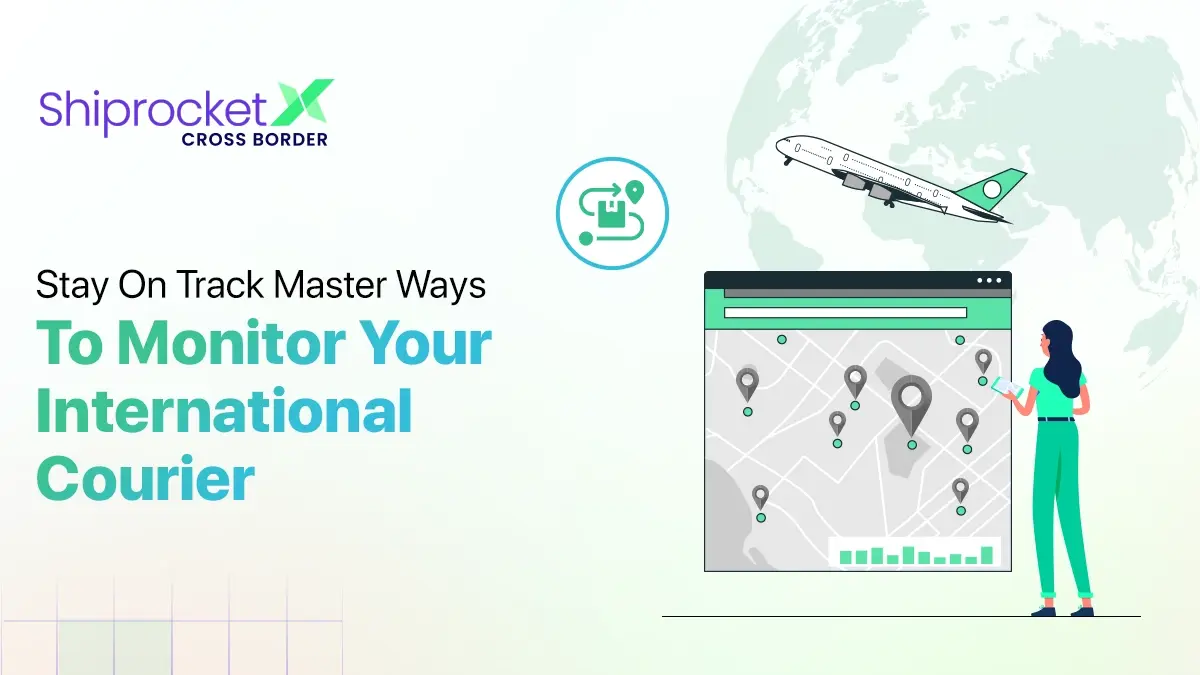Top Cross Border Trade Challenges & Solutions 2025
In this expansive eCommerce scenario where new sellers are coming into play almost every day, you must do something different to give your business that extra edge. Exploring international markets, commonly known as cross-border trade, is a great way to expand your business. With cross border trade, you can reach out to a vast audience abroad and increase sales exponentially. Several businesses across various industries are investing in overseas trade and are churning substantial profit. Statistics reveal that global trade is expected to reach around $32 trillion in 2024. But, every great opportunity is followed by challenges. Here is a list of some of the top cross border eCommerce challenges and how you can overcome them.

Cross Border Trade Challenges
Without any doubt, cross border trade (CBT) poses many opportunities to eCommerce companies. It proves a boon, as businesses can sell their products worldwide with the initiative. But, there are also various hurdles that you need to overcome before successfully establishing a strong foothold in the global market. Here are a few such challenges along with the possible solutions to overcome them.
Lack of Local Market Expertise
More often than not, sellers fail to realise the importance of proper market research. Not knowing the foreign market poses the biggest challenge for any seller. Market trends vary from region to region, and it is essential to learn these trends in addition to your target consumers’ buying behaviour among other things.
Let us understand this with a cross border trade example. For example, in India, the preferred payment mode for most buyers is paying on delivery, but if an Indian seller plans on expanding their reach to USA, he may have to rework his payment, and delivery methods as there is a stark difference. Prepaid and gift card payments are a trend there.
Also, the buying pattern is hugely influenced by festivals and important days. Sometimes sellers can face backlash as their campaigns do not align with the buyer’s demand.
Solution: Thorough market research done with surveys clubbed with data-driven insights can be useful for your business. Market research will not only tell you about your customers in the international markets and their buying patterns but will also help you in differentiating your brand. Once you understand your competition, you can present your Unique Selling Proposition in a way that attracts customers.
Cross Border Shipping Challenges
Shipping and logistics management is a key differentiator when you take your venture to international waters. Since order fulfillment decides the fate of your package, it poses a challenge to partner with a suitable shipping partner. Your shipping partner must offer you top-notch shipping along with a wide reach and discounted shipping rates. It often gets challenging to fulfill all orders with one courier partner. Negotiating prices with carriers can be tedious as international shipping can be expensive. Also, pricing for the products is altered when your shipping costs increase.
Solution: To overcome this roadblock, you can partner with a shipping solution such as ShiprocketX that offers you to ship with multiple couriers and the cheapest shipping rates.
Language Barriers
Businesses also find it difficult to attract customers and build a loyal base in foreign lands due to language barriers. Overlooking the importance of understanding the culture and language of your target audience and the need to implement necessary changes accordingly may lead to failure. Let us understand this with another cross border trade example. For instance, a UK based business plans to expand its trade to Spain and Russia but decides to continue with its eCommerce portal which is primarily in English. Not changing its website content to their respective languages can hinder sales as English is not the official language in these countries. Most shoppers may not be able to understand English and find it challenging to understand your product descriptions and payment terms. Thus, they are likely to refrain from shopping from your website.
Solution: Do not overlook the importance of providing information in their native language, especially if the latter is not their official language. When Coca-Cola conducted its ‘why this Kolaveri di’ campaign, they had the song sung in Turkish to connect with its potential buyers in Turkey.
Additional & Overhead Costs
When setting up a business for the global market, you need to invest in various things that you otherwise would avoid. First of all, your website needs to be revamped to accommodate the international pricing model. Different languages need to be added to ensure your buyer understands the product they are ordering. You must also have a currency converter that lets them convert the website’s price into their currency.
Along with this, the customs and taxes levied on each item increases. Besides, currency fluctuations often add to the overall expense. The amount you invest in resources to manage an international division is high as you need to build a communication bridge between your company and the buyer.
Solution: The duties paid for shipping are high, and you need to invest in resources to complete all paperwork and formalities so you can conduct international trade seamlessly.
Understanding Regulatory Norms
Cross border trade often faces hurdles due to a lack of understanding about the stringent regulatory norms that appear to be quite complicated. Many businessmen dive into international trade without completely understanding about the custom duties, taxes, and trade agreements that form an essential part of this trade. Non-compliance can delay the shipping process, stall trade, and even incur penalties leading to losses.
Solution: All the regulatory norms related to international trade must be thoroughly understood and strictly adhered to ensure smooth cross border trade.
Payment Methods
Providing buyers a uniform payment infrastructure is a tough job! Often businesses lose out on potential customers because they cannot offer a frictionless payment system to their customers. The payment preference of people is different in different regions. According to a report by Practicalecommerce, 50% of all eCommerce transactions in India, are cash on delivery. Similarly, in North America, the payment preference is dominated by cards.
Solution: Most times, having a single payment gateway for domestic as well as international payments can hinder sales. Therefore, It is highly recommended to conduct thorough research about local payment methods and see what works for your business!
There are various alternative payment methods that sellers need to be acquainted with before they begin selling.
Local Promotions & Marketing
The essence of your content and marketing campaigns can also cause hindrance. An ad that works in India doesn’t necessarily have to work in Brazil. If they are rooted in your culture then they wouldn’t seem relevant to your potential buyers based in foreign lands. And if they find it difficult to relate to your brand then they may hesitate trying your products and services.
Solution: Understanding the likes, dislikes and overall culture of your target audience before presenting them with an advertisement or piece of information is necessary. You must conduct a thorough market research to understand the culture of your target audience. Generate social media posts and website content rooted in their culture to ensure relevance and win their confidence.
It is a good idea to get in touch with the local influencers in your target country/city. They can quickly get your product across thousands of consumers.
Navigating Returns and Refunds
Businesses require navigating a complex procedure when it comes to processing returns and refunds of goods sold in the international markets. Following essential regulatory norms, bearing administrative burdens and incurring additional operational costs are among some of the challenges faced during the process. Besides, the procedure is lengthy and often causes dissatisfaction among the customers.
Solution: Businesses must state their return policy clearly so that customers know exactly what to expect when opting for a return/refund. It is suggested to set up return centers in key international locations to speed up the process and lower the complications and the cost involved.
Conclusion
Cross Border trade poses many challenges, but the opportunities it offers outdo the difficulties. Trade carefully and devise intelligent strategies to make sure your approach is streamlined. Every campaign should be thoroughly targeted. This way, you can save on costs and also sell successfully!






